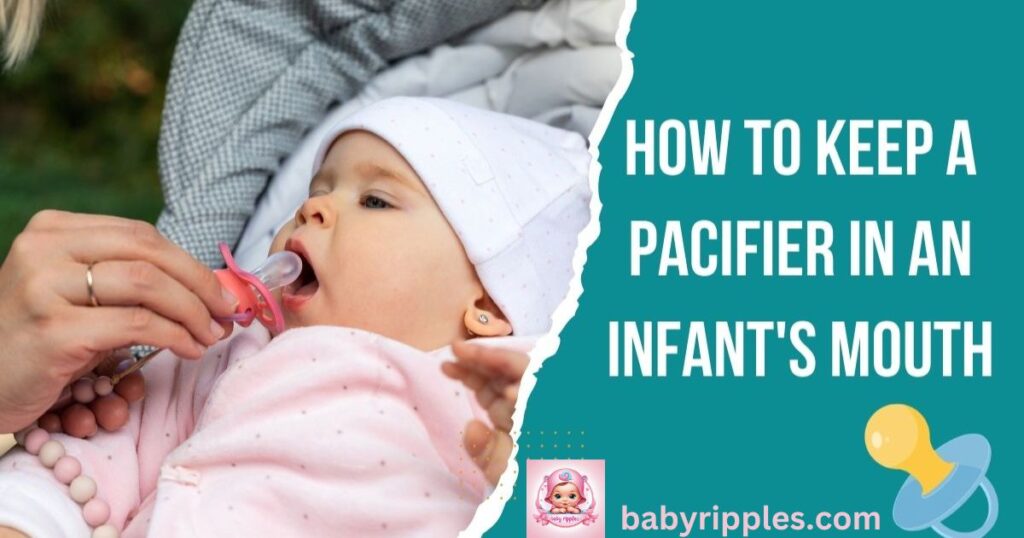A pacifier can be a lifesaver for parents, providing comfort and soothing for their little ones. But sometimes, it can be frustrating when your baby keeps spitting it out. If you’re wondering how to keep a pacifier in an infant’s mouth, you’re in the right place. Whether you’re trying to get your newborn to sleep in bassinet or simply calm them, let’s break it down in simple steps with practical advice you can use right away.
Why Use a Pacifier?
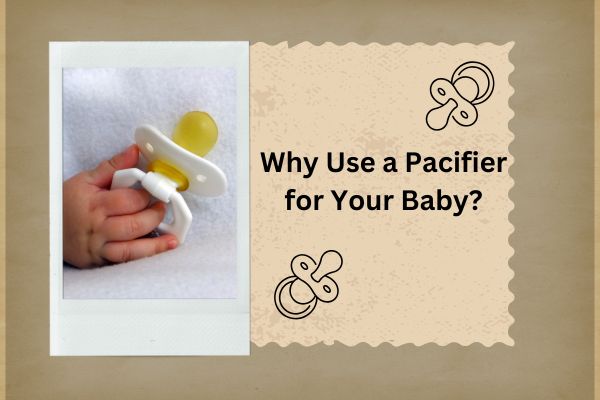
A pacifier can offer numerous benefits, such as:
- Soothing a fussy baby
- Helping with self-soothing
- Prevention of SIDS
- Offering comfort during sleep time
However, keeping the pacifier in place can be tricky. Here’s a step-by-step guide to help you out.
Step 1: Choose the Right Pacifier
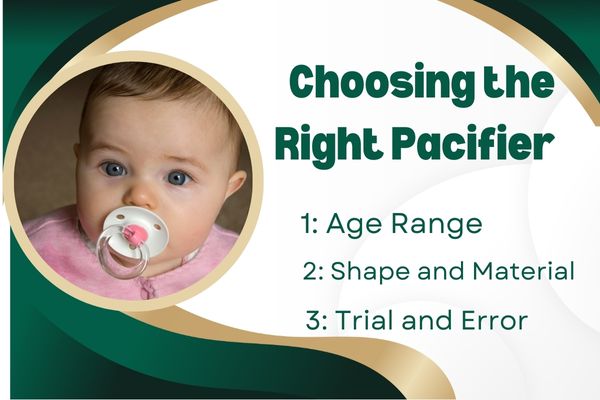
Selecting the right pacifier is crucial for success. Look for pacifiers specifically designed for your baby’s age and mouth size.
- Newborn-sized pacifiers for infants
- Orthodontic pacifiers to promote healthy oral development
- BPA-free and safe materials
Can you give a newborn a pacifier? Absolutely! Just ensure it’s designed for newborns and approved by pediatricians.
Step 2: Introduce the Pacifier Correctly
When to introduce pacifier matters. Pediatricians often recommend introducing a pacifier after breastfeeding is well-established, typically around 3-4 weeks old.
Steps to Introduce:
- Hold the pacifier gently near the baby’s lips.
- Allow the baby to latch on naturally.
- Avoid forcing the pacifier as it may create aversion.
Step 3: Ensure Proper Latch
A proper latch ensures the pacifier stays in longer.
- Place the pacifier fully in the baby’s mouth.
- Encourage the baby to suck actively.
- If the baby rejects it, try again when they are calm.
Step 4: Use a Pacifier Clip
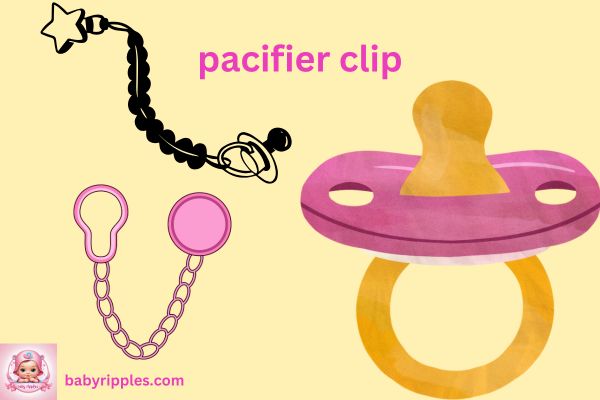
A pacifier clip can help keep the pacifier within reach but not directly in the baby’s mouth. Ensure the clip is:
- Safe and BPA-free
- Short enough to avoid a choking hazard
Step 5: Timing Matters
When to give newborn pacifier plays a role in whether your baby accepts it.
- Offer the pacifier during nap times.
- Use it when the baby shows signs of sleepiness.
- Avoid offering it when the baby is hungry.
Step 6: Encourage Self-Soothing
Helping your baby learn to self-soothe can improve pacifier retention.
- Gently hold the pacifier in place when first introducing it.
- Gradually reduce your assistance.
Step 7: Check for Comfort and Fit
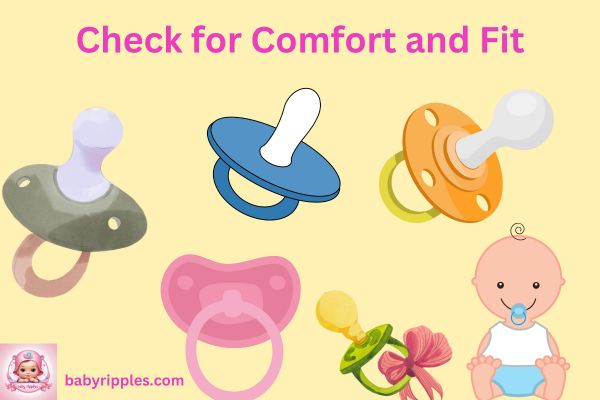
If your baby keeps rejecting the pacifier, it may be due to discomfort.
- Try different shapes and sizes.
- Ensure the pacifier material is soft and flexible.
Step 8: Consistency is Key
Maintain a consistent approach to using the pacifier.
- Use the same type of pacifier regularly.
- Offer it during similar situations (sleep, fussy periods).
Step 9: Clean and Maintain the Pacifier
Proper hygiene is essential for your baby’s health.
- Sterilize pacifiers before first use.
- Clean daily with warm, soapy water.
- Replace pacifiers regularly for safety.
Step 10: Be Patient and Observant
Every baby is unique, and some may take time to adjust.
- Stay calm and patient.
- Observe your baby’s preferences and adjust accordingly.
Common Mistakes to Avoid
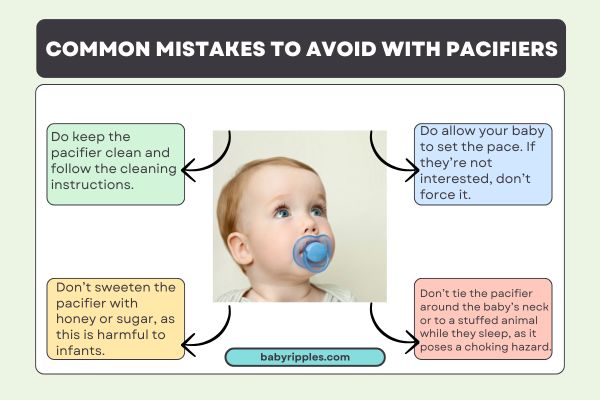
Many parents unintentionally make mistakes when trying to keep a pacifier in their infant’s mouth. Here are some to avoid:
- Using the Wrong Pacifier Size: A pacifier too large or too small can be uncomfortable.
- Forcing the Pacifier: Forcing it can create a negative association.
- Inconsistent Use: Irregular use can confuse the baby.
- Not Cleaning Properly: Failing to clean can introduce harmful bacteria.
- Using Worn-Out Pacifiers: An overused pacifier can become a safety hazard.
- Delaying Feedings with a Pacifier: Pacifiers shouldn’t replace feeding.
- Skipping Comfort Checks: Discomfort from other issues might be the cause, not the pacifier itself.
Final Thoughts
It takes time and practice to learn how to keep a pacifier in an infant’s mouth. With the right pacifier, proper introduction, and a bit of consistency, your baby can enjoy the soothing benefits with ease. Remember, every baby is different, so keep experimenting to find what works best for your little one.
FAQs about How to Keep a Pacifier in an Infant’s Mouth
1. Can you give a newborn a pacifier?
Yes, you can give a newborn a pacifier, but it’s recommended to wait until breastfeeding is established, around 3-4 weeks old.
2. When to introduce pacifier?
The ideal time to introduce a pacifier is after your baby has established a good breastfeeding routine, typically a few weeks after birth.
3. When to give newborn pacifier?
Offer the pacifier when your baby is calm, sleepy, or needs comfort, but avoid using it as a substitute for feeding.
4. How do I keep the pacifier from falling out at night?
Try using orthodontic pacifiers designed for nighttime use and ensure your baby is comfortable before bed.
5. Is it safe to use a pacifier clip?
Yes, but ensure the clip is short, safe, and free of choking hazards.

